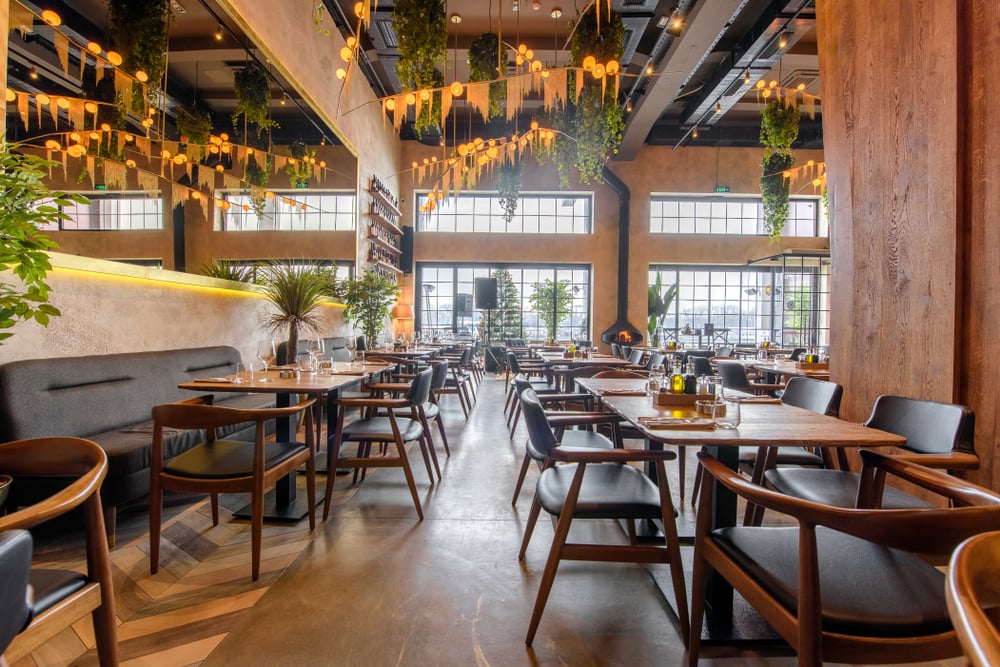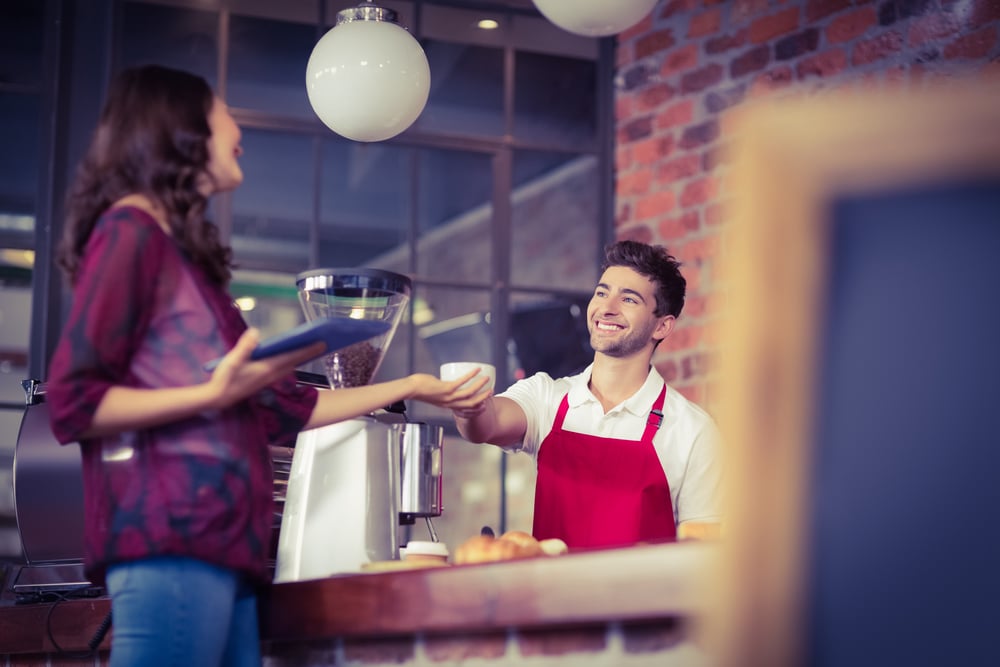Profit margins can be very thin in the hospitality industry. Restaurant owners and managers need to look into every area to ensure they are getting as much value from their venues as possible.
Your venue's seating capacity is one of its most important elements. If it is not properly optimised, you may be missing out on a significant amount of revenue.
Our comprehensive guide will take you through an array of steps you can take to improve your restaurant seating capacity. Implement these concepts in your venue and see how your profits are impacted.
What is Restaurant Seating Capacity?
Restaurant seating capacity refers to the amount of customers that can be seated in a venue. Fundamentally, this comes down to how many tables and chairs you can fit into your space.
Restaurant seating capacity has a huge impact on the revenue flow of your business. You can spend significant sums of money marketing your venue and delivering excellent service to build word of mouth.
But without a great restaurant seating strategy, your earnings will be capped by inadequate use of space.
Naturally, restaurant seating capacity varies greatly from venue to venue. For instance, a small cafe's seating capacity is very different to that of a large bar/restaurant.
As such, a custom approach is required for maximising seating capacity in your venue. The same tips are worth considering across any venue, but the way you implement them must be tailored to your specific needs.
10 Ways to Improve Restaurant Seating Capacity
Below are 10 methods you can use to improve your restaurant's seating capacity. See how many you can implement in your venue.
1. Make Use of Outdoor Seating
Outdoor seating areas can be a golden ticket to improve seating capacity in your restaurant. Not only does it improve the number of tables you can fit into your venue, but it also adds a whole new dimension to the dining experience that customers often love.
However, outdoor seating can prevent several challenges. Here are a few areas to consider before you implement outdoor seating in your venue:
- Council permits: Using outdoor space for seating almost always requires special permission from your local authority. This ensures that zoning, safety and accessibility restrictions are adhered to. See our guide to the required licences for opening a restaurant for more information.
- Weatherproof furniture: Investing in furniture that is capable of withstanding an array of weather conditions is a critical part of outdoor seating. Opt for materials like aluminium, treated wood and durable plastic.
- Climate control: Ensure your outdoor seating is comfortable in a range of temperatures. For winter, invest in heaters, and on scorching summer days, fans may be necessary.
- Lighting: For safety and ease of reading menus, proper lighting is key for your outdoor seating arrangements. This is especially true for nighttime use. You might also consider string lights, lanterns and candles to lend ambience to your outdoor areas.
2. Optimise Your Floor Plan
An optimised floor plan is crucial to getting the most out of your restaurant's seating capacity. Understanding the principles of yield management enables restaurant owners to create the perfect floor plan.
A great floor plan must balance seating the maximum number of patrons with comfort and walking zones. Check out our floor plan guide with 6 layouts and examples for restaurant owners to follow, plus our full ebook with 20 layouts.
In addition to maximising profitable space in your venue, an optimised floor plan can improve your customer's dining experience and the overall efficiency of your venue. Don't be afraid to try out different seating arrangements to find the best one for your restaurant.
3. Choose the Right Tables & Seats
Your choice of tables and seats is a crucial component of your restaurant's seating capacity.
Square and rectangular tables are commonplace in restaurants for good reason. They are easily arranged within your dining space and can be simply pushed together to accommodate larger parties.
Your chairs should offer comfort, but they should not be overly bulky, especially concerning their backs. You might even opt for backless stools if appropriate.
Every bit of space saved with your tables and seating adds up to more guests that can be served, and more revenue for your business.
4. Flexible Seating Arrangements
While you're choosing the perfect seating arrangements for your venue, consider flexible seating arrangements. You might think of a table and chairs as a simple selection of furniture, but there are plenty of bells and whistles for you to consider.
Modular furniture is designed to be put together and split apart with maximum efficiency. With the right modular furniture in your restaurant, you can easily turn 3 2-seater tables into a 6-seater.
Your furniture should be lightweight, making it easy for staff to move tables around your venue. Avoid stacking tables with candles and other items that can make them more difficult to move.
Another option is expandable furniture. These tables have built-in features allowing them to be quickly adjusted to accommodate larger party sizes. This flexibility helps to keep your restaurant's seating arrangements running more smoothly through the course of a busy service.
5. Bar Seating
If your venue boasts a bar area, do not overlook this seating opportunity. Purchase some bar stools and place them behind your bar.
Providing more seating capacity is just one benefit of bar stools. It also adds a pleasant ambience to your venue. Customers can sit at the bar and spend time interacting with bar staff, thus enhancing their dining experience.
Venues that double as both bars and restaurants can sometimes face the issue of giving tables to patrons who only want to drink. This means diners – who are potentially far more valuable customers – can be left without a table.
With bar seating at your disposal, you have the perfect place to seat your drinkers while leaving tables open for diners.
6. Know Your Party Size
Understanding your average party size is an important step in enhancing your seating capacity. Analysing your average party size plays a big role in ensuring that you can design your seating arrangement productively.
A venue with an average party size of 2 (such as a fine dining restaurant) will want to structure its dining room very differently from a venue with an average party size of 6 (such as a restaurant/bar).
The tables you will want to use will be quite different. In turn, this will impact the design of your entire room.
Take the time to find the average party size for your venue. You can also refer to a table management system like ResDiary to offer quick insights about party sizes on a given night.
7. Use Booths
Booths are perfect for maximising space on corners and along walls. Your floor plan can be completely transformed by utilising booths in space that would otherwise go unused.
Booths can be used to sit party sizes like 6, often in a more space-efficient way than a table offers. The lack of chairs can make traffic flow in your restaurant more seamless.
Booths are also a popular option for some diners, offering a different level of comfort and privacy when compared to table seating. With all of these benefits on offer, there's no reason not to implement them in your venue as soon as possible.
8. Avoid No-Shows
No-shows can be highly detrimental to your restaurant seating strategy. Research indicates that no-shows may constitute 5%-20% of restaurant bookings. The resulting lost revenue can be disastrous for venues.
One strategy employed by many hospitality businesses is overbooking. Overbooking involves accepting more table bookings than your venue can fulfil if all parties come to your venue.
When it goes right, overbooking means a restaurant is filled perfectly to capacity. When it goes wrong, you'll have diners frustrated that their reservation cannot be upheld.
You can avoid the need for overbooking with up-front deposits. This useful strategy involves requiring customers to pay a deposit to place a booking.
This greatly increases the chances customers will show up for the booking and allows you to claim some restitution if they do not. You'll never look at an empty dining room littered with "Reserved" signs again.
9. Turn Tables Over Efficiently
An important way to get the most out of your restaurant seating capacity is maximising table turnover. You want to seat, serve and get customers out the door as swiftly as you can.
Of course, table turnover is a delicate process. You never want to make customers feel as though they are being kicked out of your venue.
Some key tips for improving table turnover include:
- Set expectations: One way to make sure customers can be served efficiently is to put a time limit on reservations. If customers and staff know a reservation lasts for 2 hours, they can act accordingly throughout their meal. This prevents them from feeling rushed at the end of their reservation.
- Streamlined service: The principles of great restaurant customer service are important for efficient table turnover. Staff should obtain orders from diners promptly from the time they are ready to order. The back and front-of-house should work together to get food on the table swiftly.
- Menu: Optimising your menu for table turnover is an often-overlooked process. Creating dishes with shorter cooking and service times allow you to serve guests quickly without compromising on quality. You should also level up your service preparation to cut down on wait times.
- Point-of-sale systems: Ensure your venue is using an excellent POS system that does not frequently malfunction. POS errors can seriously slow down service in your venue, preventing your staff from being able to turn tables over efficiently. See our EPOS integrations to find the right service for you.
10. Manage Reservations Effectively
Effectively managing reservations in your restaurant is an important element of improving your restaurant's seating capacity. Your entire staff needs to be on the same page, knowing which tables have been reserved, when diners are arriving and how many slots are available for walk-ins.
Many restaurants rely on a paper diary for this purpose. However, there is a far superior solution in the form of a ResDiary’s online restaurant booking system.
ResDiary allows you to set rules for table allocation and reservation time slots. Information is easily accessible by all members of staff.
ResDiary also offers W8list, a digital queueing system, and ResPhone, an automated service that accepts reservations made over the phone.
That's not to mention over 60 integrations such as EPOS systems, helping your business to run smoothly in a wide range of areas.
Book a demo today and discover all the ways ResDiary can help your venue improve seating capacity and revenue in general.



